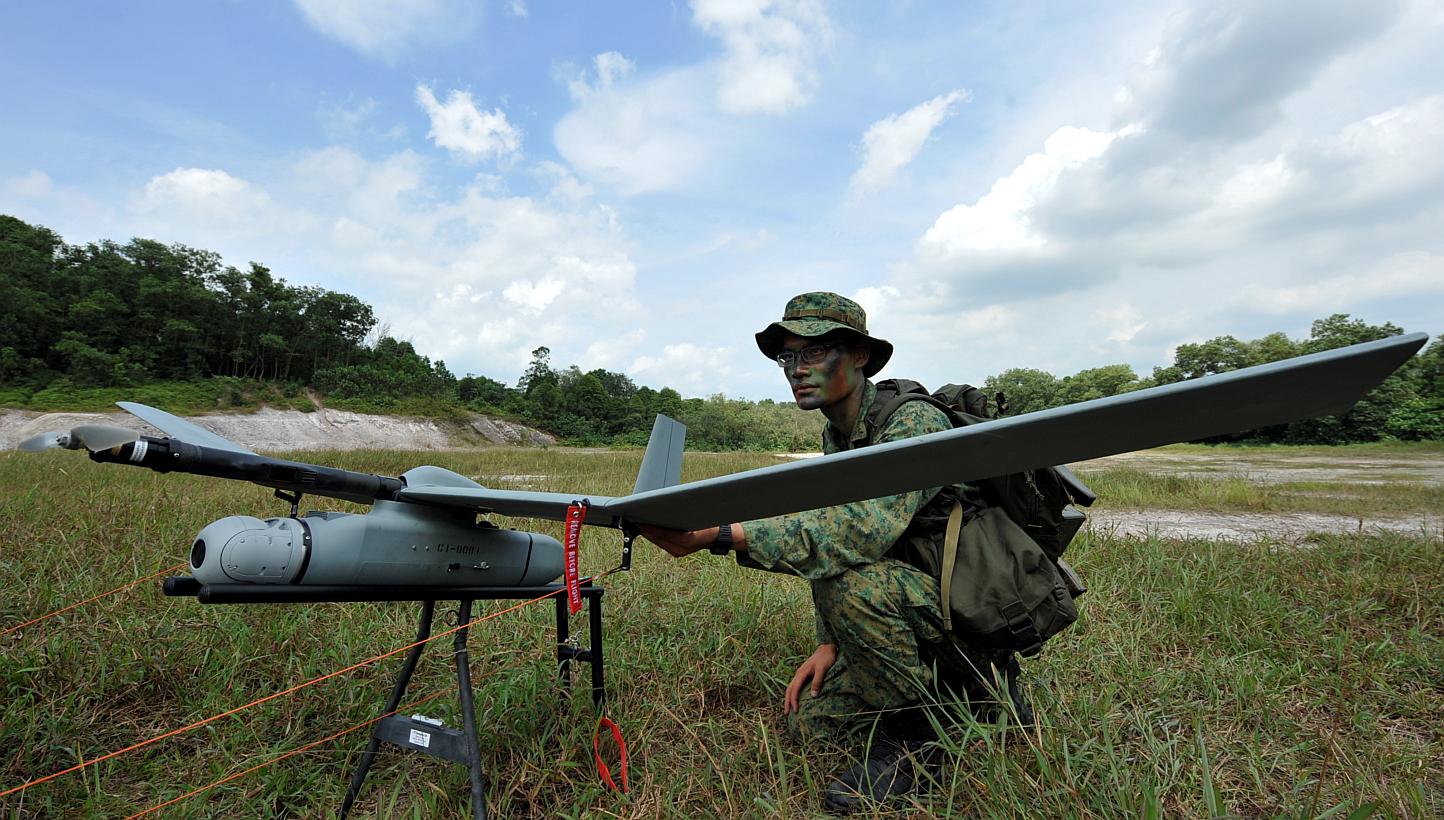Ho Shu Huang
Total Defence against threat of hybrid warfare
Hybrid warfare has highlighted the timeliness and timelessness of Singapore's defence strategy.
Sign up now: Get ST's newsletters delivered to your inbox

Portable unmanned aerial vehicles (UAVs) have become part of the arsenal available to troops. Technology has lowered the barriers to wage hybrid warfare. Weapons are now drawn from political, economic, information and even humanitarian domains. In theory, anything could become one.
ST FILE PHOTO
Ho Shu Huang
Follow topic:
Last month, Minister for Defence Ng Eng Hen drew Parliament's attention to the term "hybrid warfare", describing it as the integration of "conventional and unconventional tools of warfare by both states and non-state actors".
Technology has lowered the barriers to wage war via such means. Weapons are now drawn from political, economic, information and even humanitarian domains. In theory, anything could become one.
In fact, as Russian General Valery Gerasimov, who Dr Ng cited, put it, "the role of non-military means of achieving political and strategic goals has grown and, in many cases, they have exceeded the power of force of weapons in their effectiveness".
Any political community could now have the means to attack another.
Given the pernicious nature of hybrid warfare, what should hybrid warfare mean for Singapore?
War may look different. It is waged by one political community to manipulate another into acceding to its demands. The means adopted can, and will, vary. War, therefore, does not have to conform to a single archetype of form and duration. It may no longer be just the extraordinary business of states and the conventional military. The public, however, tends to associate war with precisely these stereotypical characteristics.
Contemporary hybrid warfare means war could bear little resemblance to this characterisation. A state might not actually declare war on another before waging one covertly, or through a proxy. The legal status of such action might actually be unascertainable, the process mired in long-drawn legal arguments.
The operation of non-state actors outside the international legal system further complicates the definition of war. Combatants may also not mirror that of typical military. In fact, hybrid warfare may be subversive as opposed to openly hostile.
Disruptive cyber attacks and insidious information operations are two such examples.
This diversity in means could also result in long, chronic wars. Hybrid war-fighting could occur in fits and spurts. The battle may be waged intermittently, internationally and fought in both physical and virtual domains.
Visible military deployments may be comparatively small, with larger roles quietly played by less visible agencies involved in intelligence gathering, cyber defence and law enforcement.
War may, therefore, be acutely experienced only by a small segment of society and unevenly by the rest of it, if even at all.
Wider society could become oblivious to war. Past any initial national interest, the slow simmer of conflict could be normalised into everyday routine.
"America is not at war," begins a piece of war graffiti from the Global War on Terror. "The Marine Corps is at war; America is at the mall."
If war is a clash of wills, how can such will be sustained if society does not recognise the fight? How can it remain vigilant if it does not appreciate the threat?
The public's perception of what war looks like has to change as the means to wage it have already. As retired British Major- General Rupert Smith put it: "War as battle in a field between men and machinery, war as a massive deciding event in a dispute in international affairs: such war no longer exists."
Singapore's defence policy of Total Defence, however, is conceptually well-positioned to deal with the challenges of hybrid warfare. The five pillars of Singapore's Total Defence strategy - military, civil, economic, social and psychological - cover the broad battle spaces of hybrid warfare.
Yet there has been a tendency to instinctively ascribe the military and civil pillars as being the first among equals. To be sure, strong military and civil defence infrastructure provide Singapore a toolbox to respond to any crisis autonomously. A strong conventional force still provides a broad base of resources an appropriate response can be adapted from.
This alone is, however, insufficient.
Developing national traits for a successful defence, like societal cohesion and resilience, fundamental to the social, economic and psychological pillars of Total Defence, is just as important as acquiring the specific defence hardware and systems.
Hybrid warfare has resulted in tremendous breadth in where, how and under what guise wars may be fought. Consequently, it is possible Singapore could suffer the first blow even before war is declared, if it is. Recovering from this psychological dislocation will be crucial.
The United States military's Comprehensive Soldier Fitness programme adapts techniques from positive psychology to build up the mental fortitude of individual soldiers. These, too, could be introduced to wider Singapore society. After all, resilient individuals make for a resilient society.
Hybrid warfare has highlighted the timeliness and timelessness of Total Defence. It is, however, its broad approach and not any single pillar alone that makes Singapore's defence strategy strong in the face of evolving warfare. Going forward, equal investments in all five pillars of Total Defence will have to be made.
stopinion@sph.com.sg
The writer is an Associate Research Fellow at S. Rajaratnam School of International Studies, Nanyang Technological University.

